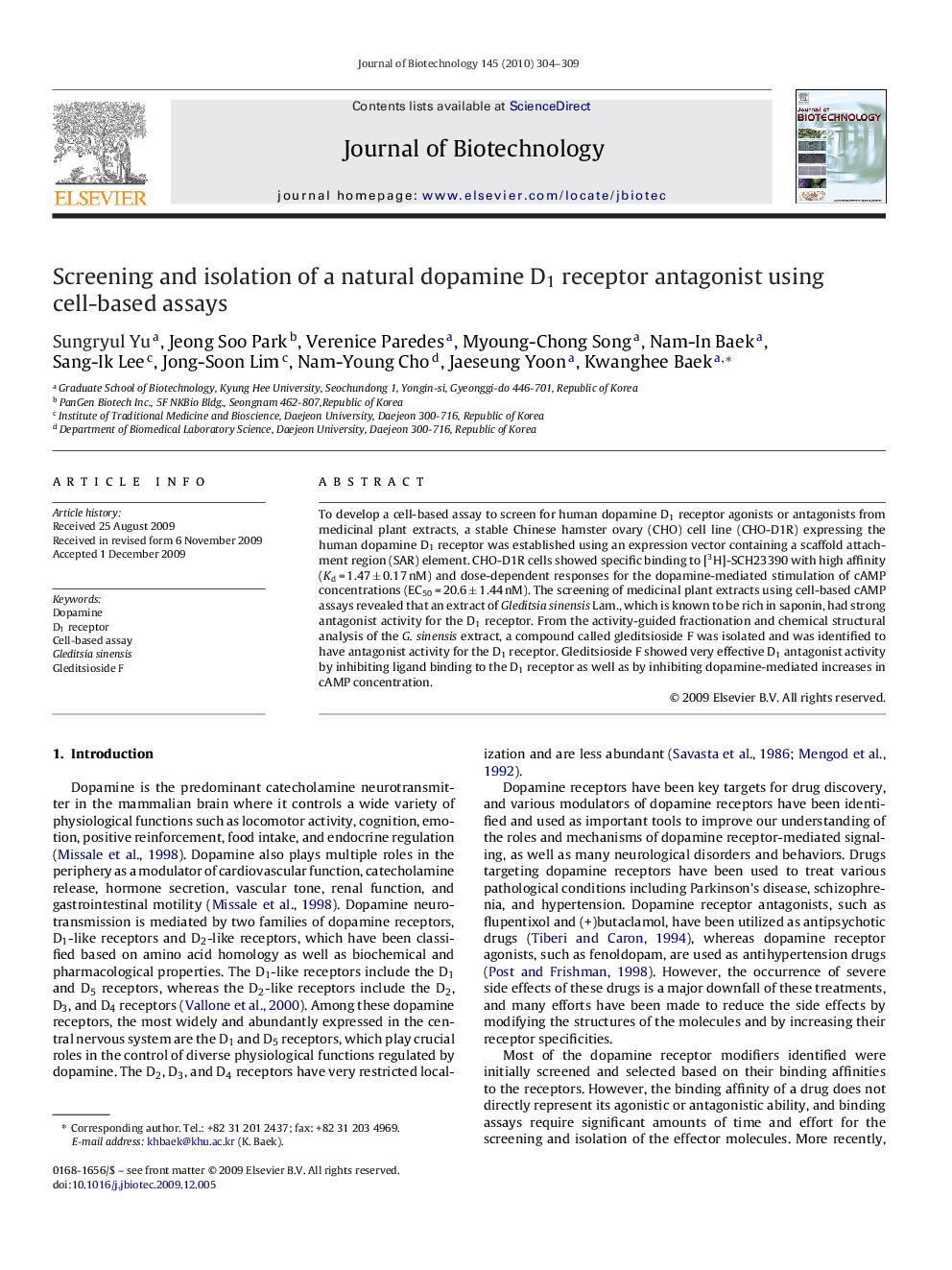| Article ID | Journal | Published Year | Pages | File Type |
|---|---|---|---|---|
| 24486 | Journal of Biotechnology | 2010 | 6 Pages |
To develop a cell-based assay to screen for human dopamine D1 receptor agonists or antagonists from medicinal plant extracts, a stable Chinese hamster ovary (CHO) cell line (CHO-D1R) expressing the human dopamine D1 receptor was established using an expression vector containing a scaffold attachment region (SAR) element. CHO-D1R cells showed specific binding to [3H]-SCH23390 with high affinity (Kd = 1.47 ± 0.17 nM) and dose-dependent responses for the dopamine-mediated stimulation of cAMP concentrations (EC50 = 20.6 ± 1.44 nM). The screening of medicinal plant extracts using cell-based cAMP assays revealed that an extract of Gleditsia sinensis Lam., which is known to be rich in saponin, had strong antagonist activity for the D1 receptor. From the activity-guided fractionation and chemical structural analysis of the G. sinensis extract, a compound called gleditsioside F was isolated and was identified to have antagonist activity for the D1 receptor. Gleditsioside F showed very effective D1 antagonist activity by inhibiting ligand binding to the D1 receptor as well as by inhibiting dopamine-mediated increases in cAMP concentration.
